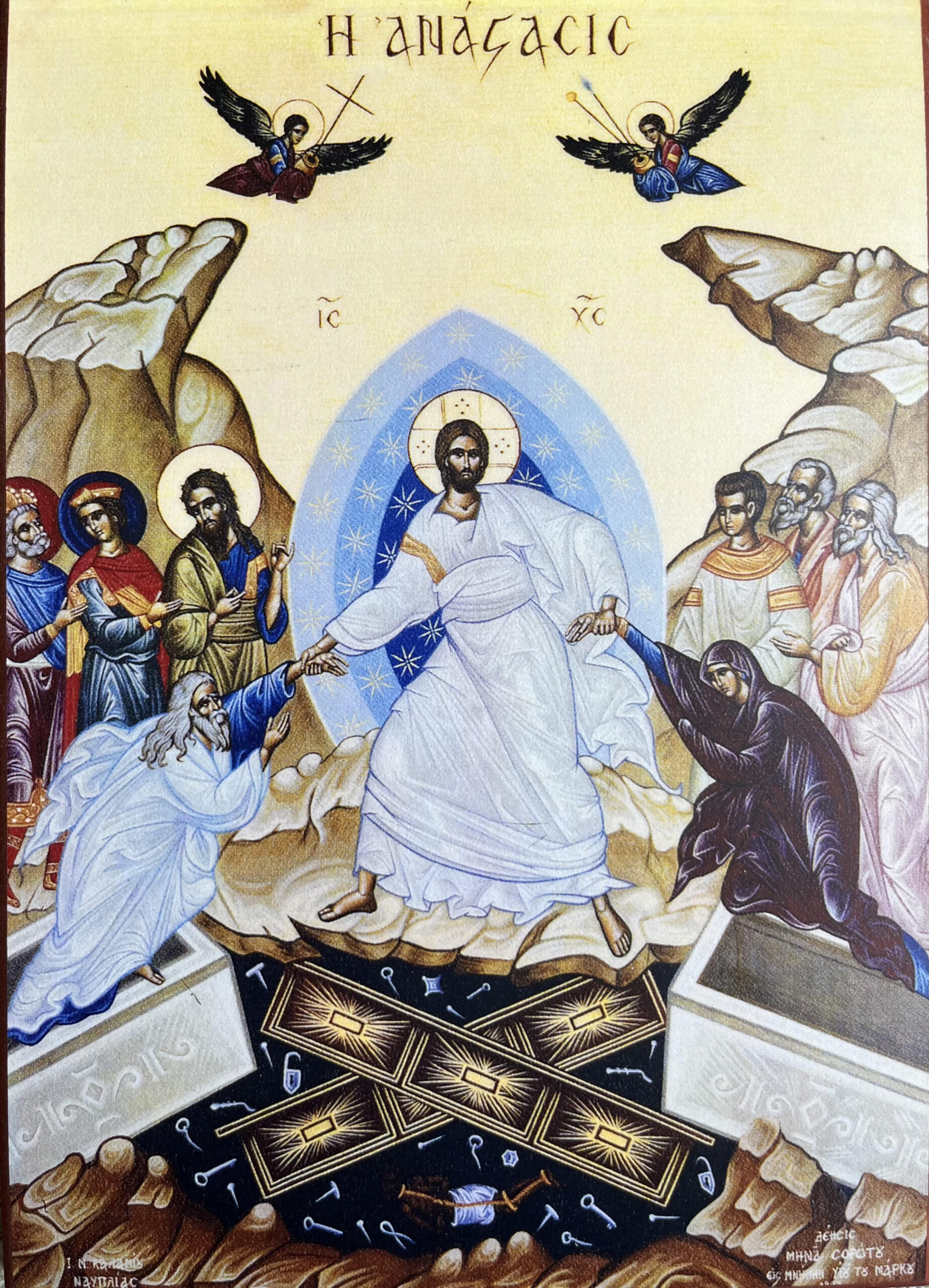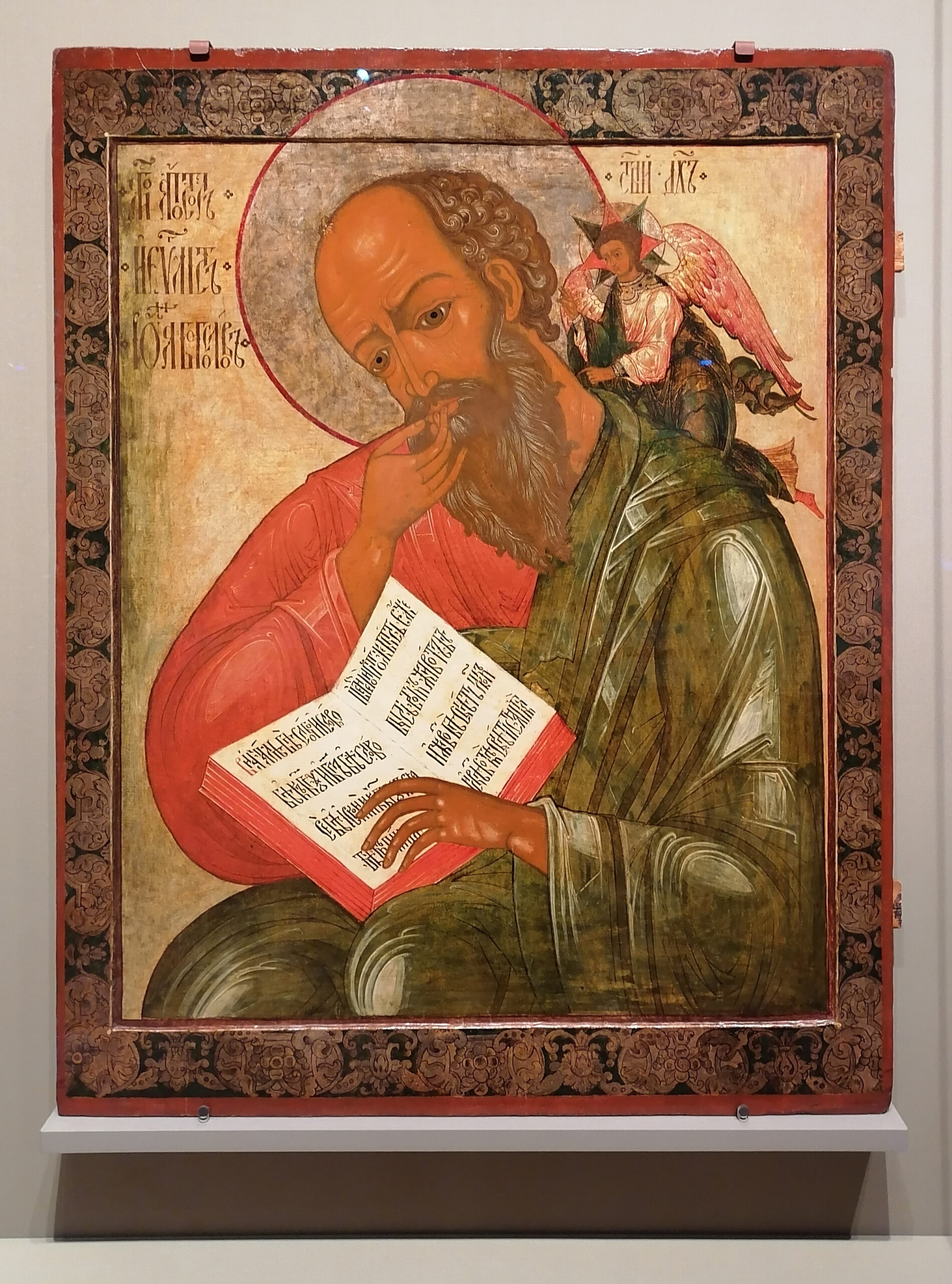You ransomed us from the curse of the Law by Your precious Blood; You have shed forth immortality upon mankind by being nailed to the Cross and pierced with a spear. O Savior of us all, glory to You.
~Kathisma, 15th Antiphon, 12 Gospels, Holy Thursday Evening, Trans. by Fr. George Papadeas
—
Since it was the day of Preparation, in order to prevent the bodies from remaining on the cross on the sabbath (for that sabbath was a high day), the Jews asked Pilate that their legs might be broken, and that they might be taken away. So the soldiers came and broke the legs of the first, and of the other who had been crucified with him; but when they came to Jesus and saw that he was already dead, they did not break his legs. But one of the soldiers pierced his side with a spear, and at once there came out blood and water. He who saw it has borne witness—his testimony is true, and he knows that he tells the truth—that you also may believe. For these things took place that the scripture might be fulfilled, “Not a bone of him shall be broken.” And again another scripture says, “They shall look on him whom they have pierced.”
John 19: 31-37
Crucifixion was one of the most painful ways to die, because it wasn’t instantaneous. A person might hang on the cross for a few days. People were not stretched out tight on the cross. The knees were bent so that the body could move up and down a little bit. In some instances, a crude seat would be part of the cross, so that one could “rest” while hanging on the cross. In order to breathe, the crucified person would push himself up to open up his airway, then slump again when he got tired. And this would continue until the person was exhausted and just gave up. Dehydration (and associated hallucinations) and exposure to the elements (sunburn, cold) would contribute to the anguish. Eventually a person would just give up, hang, and suffocate.
Jesus was crucified on a Friday. We know that He died about the ninth hour (mid-afternoon). We also know that in line with His voluntary Passion, He first bowed His head and then gave up His spirit, unlike the Hollywood movie scenes that show when a person dies, they first stop breathing and then their head falls. Jesus remained Lord even in death.
According to Jewish Law, no work was allowed on the Sabbath. That included crucifying people. Thus, the crucifixion of Jesus and the two thieves needed to be concluded, including removing their bodies from the crosses, by the time the sun set on that Friday. In order to facilitate this, the soldiers broke the legs of the thieves. With broken legs, they would no longer be able to push themselves up and breathe and would therefore die relatively quickly. When they came to Jesus and saw that He was already dead, they did not break His legs. It was not necessary. That they didn’t break His legs was also significant, because the Passover lamb in Exodus was without blemish, without any broken bones. And Jesus, the New Passover lamb also would have none of His bones broken.
One of the soldiers pierced the side of Jesus with a lance. Out of His side flowed blood and water. These substances are symbolic of two of our sacraments in the Orthodox Church. Water represents baptism, the sacrament that brings us into the life of the Church. The blood represents the Eucharist, the sacrament that sustains us in our faith. These two substances help lead us to immortality.
The hymn that accompanies this reflection is not only a hymn chanted on Holy Thursday night. It is also a prayer that is part of the service of the Proskomide, the preparation of the Holy Gifts, that is offered by the priest before each celebration of the Divine Liturgy.
The Old Testament Law provided order after the Exodus from Egypt. Ultimately, however, the Law proved to be a curse, because the righteousness that God intended the people to pursue was instead replaced by the ruthlessness of those who enforced the Law, making it more burden than joy, based more on compliance than love. The death of Christ ransomed us from this curse of the Law. And He shed forth immortality on mankind, first by dying on the cross and balancing the equation, and second, through the blood and water that gushed forth after He was pierced with the spear.
Your Cross, O Lord, is life and resurrection to Your people; and trusting in it, we praise You, our crucified Lord, have mercy on us. (15th Antiphon, 12 Gospels, Holy Thursday Evening, Trans. by Fr. George Papadeas)
We come into the Christian life through baptism (water). We are sustained in our Christian journey through the Eucharist (blood).

